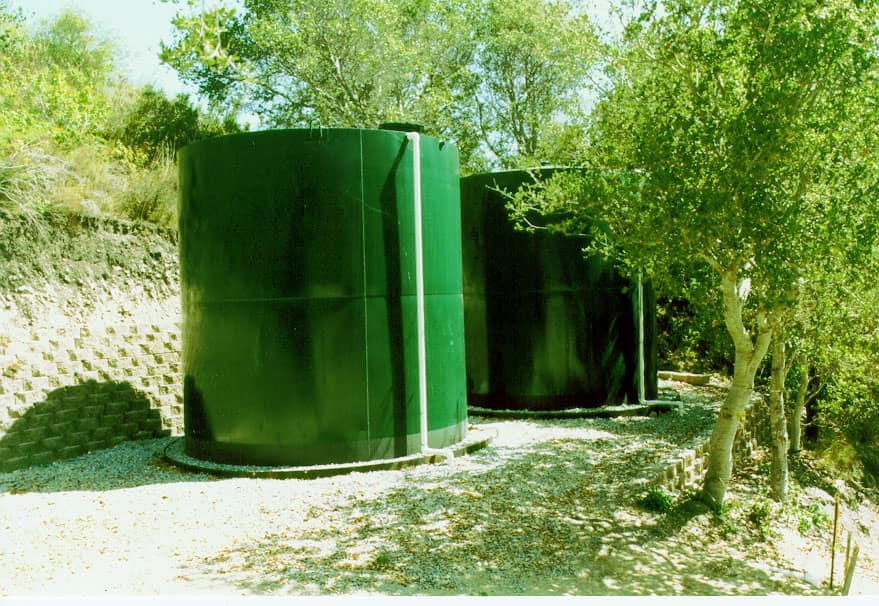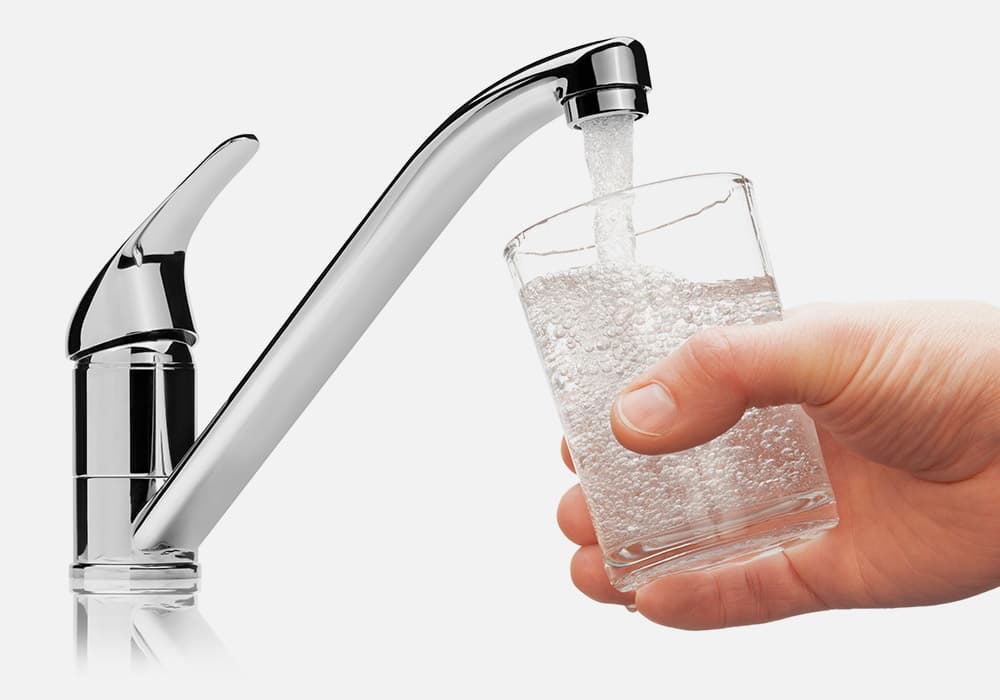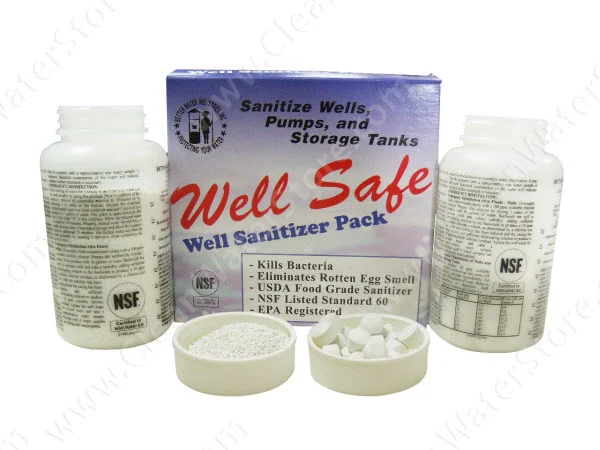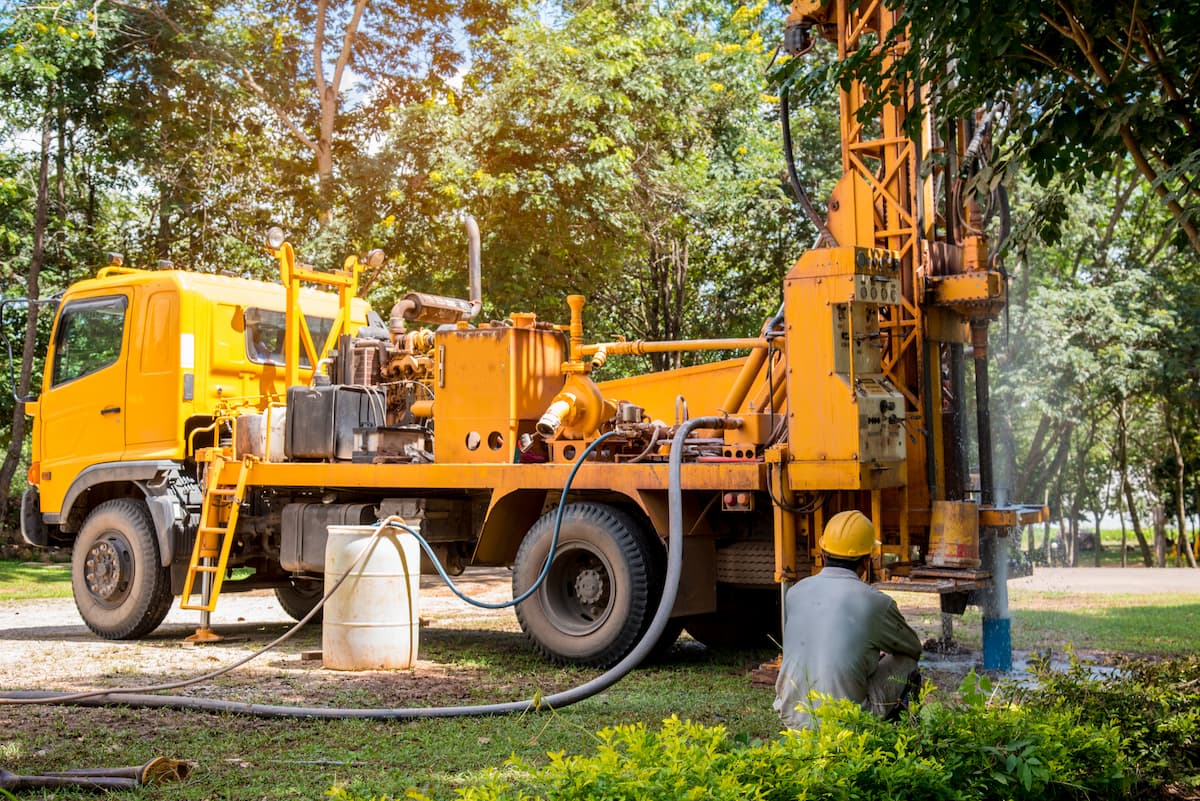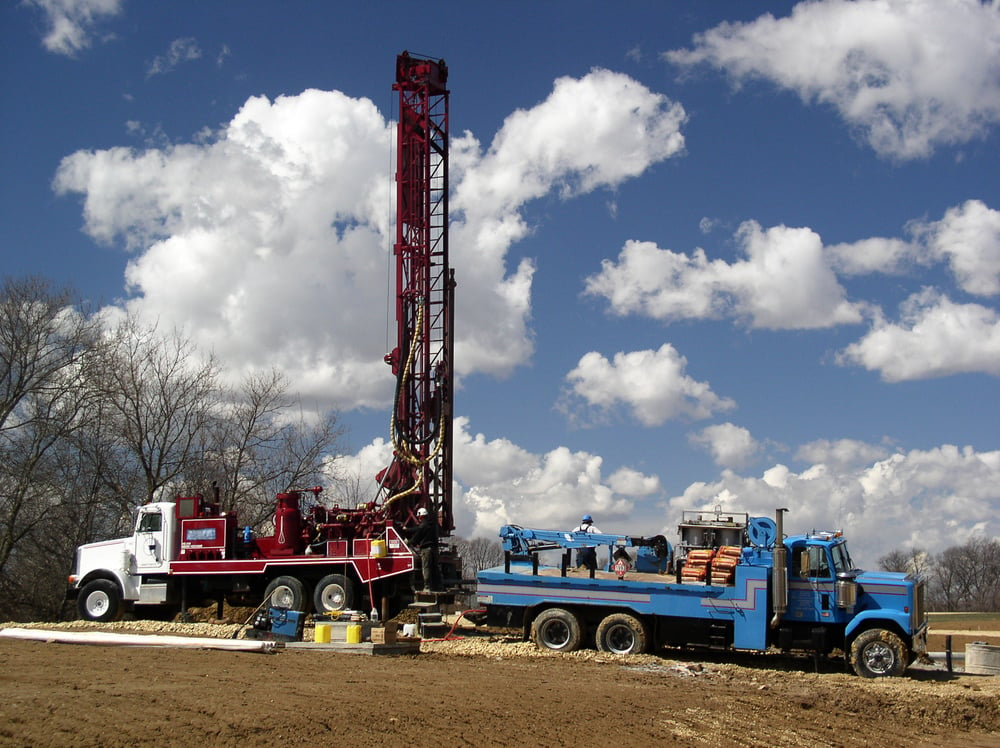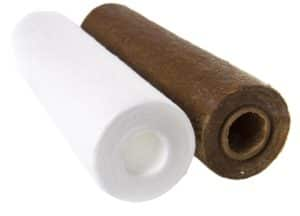Acid Well Water: When to Use Soda Ash Systems to Treat Acidic Well Water
Podcast: Play in new window | Download
Subscribe: RSS
In this episode, I talk about when to use Soda Ash for Acid Well Water.
Topics discussed include:
- What is low pH and why you might want to correct your low pH to a neutral pH?
- What is soda ash for well water?
- Why use soda ash instead of a calcite neutralizer?
- What are the benefits and advantages of using soda ash?
- How does soda ash compare to other alkaline chemicals, such as sodium hydroxide?
- How to set up a soda ash injection system
- How much soda ash you should inject.
Episode 14
Acid Well Water: When to Use Soda Ash Systems to Treat Acidic Well Water
Hello, Hey. Thank you so much for tuning in to the Clean Water Made Easy Podcast. This is Episode #14. My name is Gerry Bulfin. I’m a Water Treatment Contractor and WQA-Certified Master Water Specialist. You’re in the right place if you want to learn more about well water, well water treatment systems, and how to improve the quality of your well water.
Each episode in the series is divided into a single area or topic. You can listen to each one after another or jump around and find the ones that pertain the most to your application.
In Episode 13, I discussed calcite acid neutralizers, which are generally used to correct acid well water conditions. I also briefly discussed soda ash.
In this episode, we’ll examine when and how to use soda ash systems in more depth.
We’re going to talk about: What is low pH and why you might want to correct your low pH to a neutral pH, what is soda ash, why use soda ash instead of a calcite neutralizer, when to use it as opposed to calcite, what are the benefits and advantages to using soda ash, and how soda ash compares to other alkaline chemicals such as sodium hydroxide. We’re going to go over how to set up a soda ash injection system and how much soda ash you should inject.
First off, what is low pH? How you might want to correct your low pH.
It’s easy to check for pH. If you check your well water and it is acidic, with a pH less than 7, then you might also be experiencing some corrosion problems. This is particularly true if you have copper pipes, but you can also get corrosion on your water heater, appliances, and fixtures.
It's a good idea to have neutral water or water that won’t corrode your pipes. Signs of acid water could be corrosion of your fixtures, blue stains in your copper pipes, or rust staining in your old galvanized pipe.
Acidic water with a pH value less than 7 is more corrosive to metal. That’s why we want to correct the pH. Groundwater, such as well water, and surface water, such as spring water, can both be acidic.
Rain is the most common cause of acidic water (I discussed this in episode 13). So you get the acid rain– the rain goes to the atmosphere, picks up carbon dioxide, or in some case, if it’s in an industrial area where you may have sulfur dioxide or nitric oxide, you get acids forming in the water which is easy to do because rainwater is pure water so it doesn’t have any lime or buffering capacity to it. It goes into the ground and eventually ends up as groundwater. If you have an area where there’s a lot of limestone, or your well is pulling water out of an area where there’s limestone, then you have hard water, and you don’t have acidic water, generally.
A lot of folks will be in an area where there’s fractured granite or sand or some kind of strata in the ground that doesn’t have the buffering capacity to change the pH of water from acidic to neutral or alkaline. There are some cases where you get acidic well water from mine runoff. We run into that in the West, like in Colorado. In some areas, you get mineral acids, but mostly, it’s from the water that is naturally a little bit acidic. You’re pulling it out from the part of the ground where there’s no way to buffer it. Therefore, you end up with corrosive water and want to fix it.
What is Soda Ash?
What is soda ash anyway? That’s a funny term. Why would I want to put soda ash in my water? Basically, it’s very simple. Soda ash is just sodium carbonate.
The type of soda ash we use in drinking water is natural, pure sodium carbonate. You can get synthetic soda ash, but in my understanding, most soda ash comes from the mineral “trona,” a natural sodium carbonate mineral. For drinking water, you want to get one that is NSF-certified or made for drinking water.
Why would I want to use soda ash instead of calcite neutralizers? In the last episode, we talked about calcite neutralizers. Calcite looks like white sand. It’s a crushed white marble or white calcium carbonate. When water flows through a tank, it adds calcium to the water, and that’s what neutralizes the pH. It takes acid water and turns it into neutral or alkaline. It’s adding hardness to the water.
Calcite neutralizers can work well if your water is soft and not high in hardness. But if your water is hard, the calcite doesn't dissolve, and that is one instance when we recommend soda ash: when you have hard water and you need to correct the pH.
So Why Would I Want to Use Soda Ash for Acid-Well Water?
Another thing is that a lot of times, the acidity of well water is 6 or 6.5. Again, 7 is neutral, so you're shooting somewhere between 7 and 8. So, calcite works well if you have a pH of 6 or 6.5. You don't need a lot of calcite, and you don't need to add it too often. It makes the water a little harder but is not too bad. You generally don't have to add a water softener after, but you can.
If your pH is less than 5, or if it’s 5 or 4.8, you have to use a lot of calcite. Usually, you have to use another mineral with the calcite called magnesium oxide, which is sold under the name Flowmag. Corrosex is another brand. Basically, it’s magnesium oxide, another mineral, and it makes your water hard.
If your pH is less than 5, you’re better off using soda ash. It just works better. One problem is when we really have a low pH, 4.5 or 5, then it’s hard to get the pH to stay the same all the time. With the calcium neutralizer, when the water first comes out, it’s very high, and then it suddenly drops down. It’s better to have a soda ash system if you have a very low pH.
The other thing is that soda ash can handle higher flow rates of water. For instance, you need to treat a lot of water like you’re running water to a couple of homes, or maybe it’s a heat pump system, and you’re pumping it continually; you have to use a lot of calcite. Then you’re dealing with having to add a lot of calcite, which again looks like white sand. In a mineral tank, you have to depressurize, unscrew the plug, and then add more. If you do it once or twice a year, it’s easier than soda ash. But if you have to do it every month, then you’re better off using soda ash.
How to set it up
How do you go about setting up a soda ash for acid well water injection system? Well, it’s set up very much like any other chemical injection pump system, just like you set up a chlorinator or, maybe you’re pumping in hydrogen peroxide.
It works by: There’s a solution tank, which is just a plastic tank that holds your soda ash and water solution, and then there’s a pump, a little pump that pumps whenever the well pumps are running. The well pump turns on and pumps a small amount of soda ash into the pipe as the water is running, and then the pH is corrected instantly.
It is so easy to mix up the baking soda. Add some water and pour it into the solution tank; then it gets pumped into the pipes. Those are the main reasons. You want to use soda ash when you don’t want to make your water hard and if you have a very low pH. Definitely less than 6 and for sure less than 5. If it’s between 5.8 and 6.9, you can get away using a calcite neutralizer. If it’s less than 6 or less than 5, we found soda ash to work better than the calcite.
What about other alkaline chemicals? One question we get is: How about sodium hydroxide? That’s more concentrated, so it’s easier, and you don’t have to use as much of it as soda ash. Sodium hydroxide can often be obtained in a liquid, and you don’t have to mix a powder, but we don’t recommend it for homes or residential applications because it’s dangerous. Sodium hydroxide is essentially lye, which is a highly caustic alkaline solution.
There was one case in our area in the mountains where a little girl was taking a shower and didn’t realize it, but their sodium hydroxide system had failed and pumped the entire sodium hydroxide tank into the pipe. Their system was wired to turn on and off with the well pump, but the well pump failed, and the sodium hydroxide pump continued to pump.
The girl took a shower and got burned from head to toe. That was very bad, so you must be careful when using it and dealing with it. If you spill it, it’s just more dangerous, so we don’t recommend it. It works, but soda ash is easier to deal with and less toxic.
Many people set it up so that the metering pump is wired into the well pump, and whenever the well pump runs, the dosing pump or metering pump runs. You can use diaphragm pumps or peristaltic pumps.
But anyway, a small chemical injection pump turns on, and then it only runs when the well pump runs. Again, like I said in the story about the little girl, the problem is that if the well pump fails and no one realizes it and doesn’t shut off the system, the soda ash system may continue to inject.
You could set it up with a flow switch so that the chemical injection pump for the soda ash only runs when there is flow.
The third way to set it up is to use a proportional feed system, which looks like a water meter with a cable coming out. Whenever there’s water running, the soda ash pump can pump more or less based on the speed and flow of the water.
Some folks have a type of well pump that’s a variable speed well pump, or some people call it a constant pressure. It maintains the same pressure all the time. Then, you would need to use a proportional feeder for that type of system. That would work well when turning the soda ash on and off.
The idea is that you want to pump a fixed amount of soda ash solution that you’ve made up the same each time, and then you can easily check for pH, and then you know it’s working. So, for the soda ash feeder, we get one question: How much Soda Ash do I inject, how much of the Soda Ash do I use, and what do I set my metering pump for?
It’s all generally based on the pH of the water and your flow rate. So, you first want to find out your flow rate. Most home systems run somewhere between 5, 10, 15, and 20 gallons per minute, and 10 gallons per minute is common.
Then, generally, we’d recommend folks start out with a solution strength of 150 parts per million, which is a 10% solution. We’ll give you some examples.
Warm Water is best
We recommend warm water when using Soda Ash for Acid Well Water. Ideally, we recommend distilled water or soft water, or if you’re using your well water, you wouldn’t want well water full of rust or sediment. It has to be pretty clean water. So you mix up your soda ash solution; say you use 4 pounds of soda ash powder into 5 gallons of water to start with. You can get up to 1-2 pounds of soda ash into a gallon, but if you start with 4 pounds of soda ash and 5 gallons, that will give you a 10% solution.
In other words, it’s the same way as saying a hundred thousand parts per million. That’s how you can figure out the formula for setting the metering pump, what size pump to get, and where to set it. Talking about math can be confusing, but it’s in the free guide. I’m putting it in the show notes all about how to fix acid well water for your home for well-water, and so we refer to that; it makes more sense to read it.
Just let me run this anyway. So, you have a well that pumps 10 gallons per minute, and you want to inject 150 ppm of soda ash. Mix up your solution: 4 pounds dissolved in 5 gallons of water. That gives you a one-hundred-thousand parts per million solution strength. You know your solution is a hundred thousand parts per million of this sodium carbonate. 150 parts per million, 10 gallons a minute, and 1440 (that’s how many minutes there are in a day). Then, you divide that by your solution strength, which is a hundred thousand. That gives you roughly 22 gallons per day. That means that you need to find a pump that can at least do 22 gallons per day.
Another way to think about it is that once you do the formula, you think you're going to be using 22 gallons of solution per day. No, not exactly. That will be if your well pump is running for 24 hours. But your well pump turns on and off during the day. It might run for half an hour a day in total.
Say you have a 30-gallon solution tank; it’s going to last for a couple of months. Depends on how much water you use. With this formula, which is also in the guide, you can easily figure out how much soda ash solution you’re gonna use. Make sure you’re getting the right size metering pump to pump it in. If you get too small one, you’re not gonna get enough solution, therefore, your pH is gonna be raised but it’s not gonna be neutral to what you want.
That is a common complaint we get from folks who come to us: ‘What the heck? Soda ash doesn’t work!' One reason is that the metering pump is too small, and the amount of soda ash solution is too weak. You can only make so much of the soda ash solution because you can only dissolve so much sodium carbonate in water. If you try to put too much in, it just ends up dropping off like sludge in the bottom of the tank. It doesn’t do anybody any good. One nice thing about it is that it's very easy to check once you get it set up. You can do a quick pH test. You can use litmus paper, you know, the test strips. You can use a pH meter. We prefer the drops. You put a few milligrams of water in a little plastic vial and add 4- 6 drops of this reagent. If your pH is neutral, it turns green. If it’s higher than 7, it might turn blue. There’s a little chart that shows the readings. If it turns yellow, then you know it’s low pH. It’s very easy to do. It gives you a quick and pretty accurate way to tell that it’s working.
If it comes out and you see the pH is 9. Well, you don’t want a pH of 9. The pH should be between 7 and 7.5 and maybe 8 at the most. You can easily go over to the metering pump and turn it down. You can adjust this soda ash pump so it can pump more or less. You might get a pump that can pump 24 gallons a day, but you might only run it at 50% of its capacity. So you can turn it down. If the water in your well changes pH, which does happen. Sometimes heavy rain or groundwater is changing and can affect the pH, but that is pretty unusual. Most of the time, the pH stays constant, but it might vary slightly. My point is that once you get it set up, you’re good.
With calcite neutralizers, you sometimes get a higher pH. If you use a lot of water, you get a lower pH. If you forget to add calcite to it, then, of course, it doesn’t work either. The soda ash systems are easy to set up, have little trouble, and work great.
There you have it. We talked about why you use soda ash systems and when you use one. Basically, you want to use it when your pH is very low and you don’t want the water to be hard. We also talked about how to set them up, how much to inject.
Remember that our show notes on the site cleanwaterstore.com/podcast for episode #14 include our free guide on everything you need to know about treating acidic water.
I hope that was helpful to you. If you have questions, email me at gerrybulfin@cleanwaterstore.com. If you’re listening to this on iTunes, a fair review would help this podcast. Thank you.
Soda Ash Statistics and Information – U.S. Geological Survey provides data on the worldwide supply, demand, and flow of soda ash. Read more.


